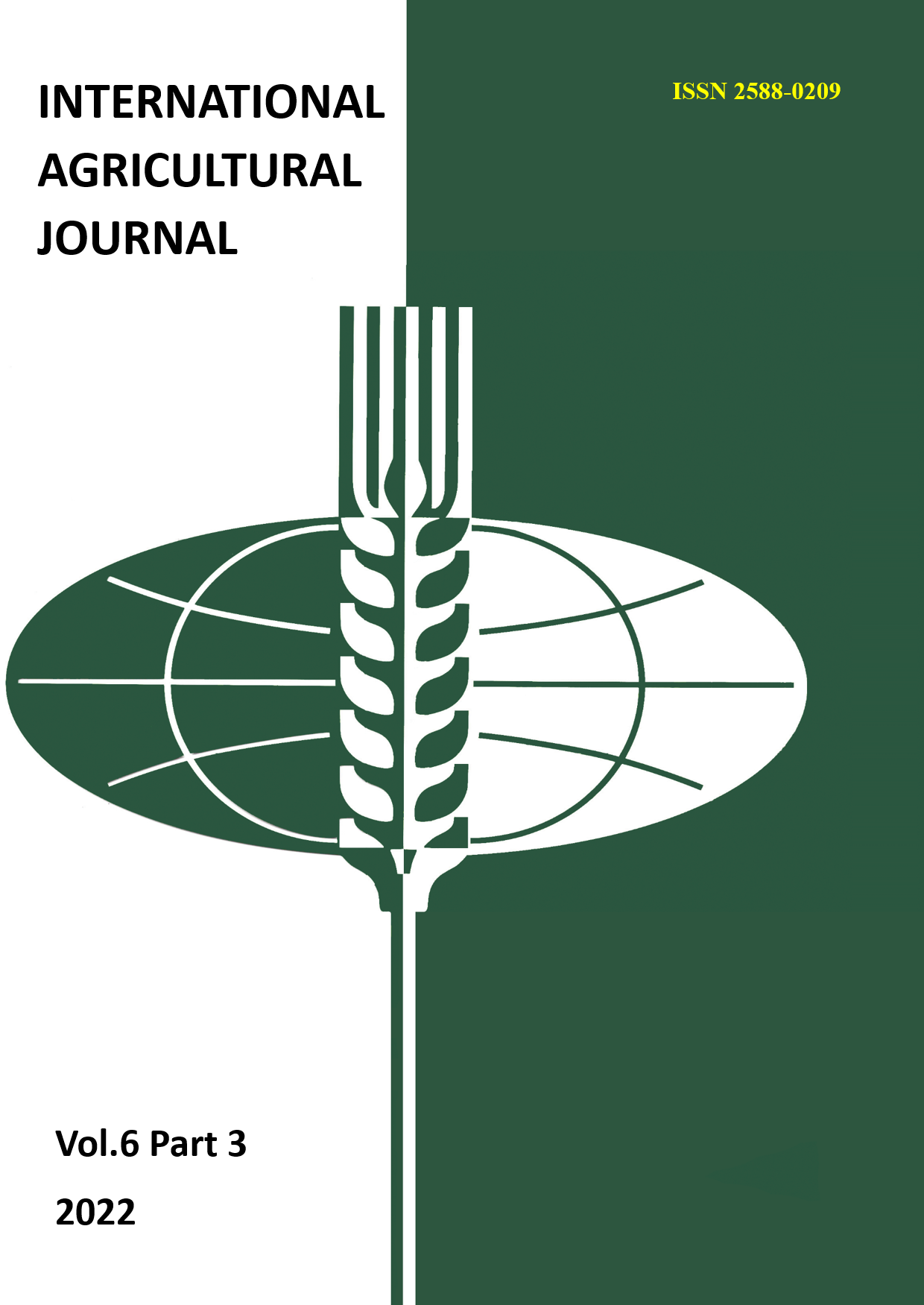THE METHOD OF FUNCTIONAL GEOECOLOGICAL ZONING OF METAGEOSYSTEMS FOR THE PURPOSES OF SUSTAINABLE ENVIRONMENTAL AND SOCIAL AND ECONOMIC DEVELOPMENT OF THE REGION (BY THE EXAMPLE OF THE REPUBLIC OF MORDOVIA)
Main Article Content
Abstract
The article is devoted to topical issues of the spatial organization of cultural landscape metageosystems for the purposes of optimizing regional land use. The experience of polarization of the northern forest-steppe of the western slopes of the layered-tier Volga Upland and the marginal part of the forest geosystems of the layered Oka-Don lowland within the boundaries of the Republic of Mordovia is presented in the article. The authors proposed a system of methods based on the principles of geoinformation modeling, analysis of Earth remote sensing data, calculation of morphometry of geosystems and biological diversity, analysis of economic development processes, geoecological problems and destructive processes. A digital model of geoecological polarization of geosystems for the purposes of sustainable development and optimization of the system of regional land use with the allocation of the structure of the economic framework and zones of ecological balance is proposed as a result of the research. The geographic information system (GIS) «Mordovia» is used as a basic resource. The electronic synthetic landscape map is the main module. The typological classification of geosystems at the level of systems (subsystems), classes (subclasses), types (subtypes), genera (subgenera) is the basis of its functioning. The landscape module in the regional GIS was supplemented with thematic blocks «Geoecology of the economic framework», «Geodiagnostics of zones of ecological balance and biodiversity» and «Calculation of morphometric landscape indicators» for the purposes of the research. These blocks provide systematization and interpretation of heterogeneous geodata to determine the spatial configuration, geoecological analysis and forecast of the functioning of the structural elements of the economic framework and zones of ecological balance of different orders. The results of the research can be used to optimize the system of territorial planning, regional land use and planning of cultural landscapes.
Article Details
References
2. Koshkarev A.V. (2019). Geoinformatika v infrastrukturnom obespechenii tsifrovoi ehkonomiki [Geoinformatics in infrastructural support of the digital economy]. Geodesy and cartography, no 1, pp. 119–126. DOI: 10.22389/0016-7126-2019-943-1-119-126.
3. Nikolaev V.A. (2006). Landshaftovedenie: seminarckie i prakticheskie zanyatiya [Landscape science: seminars and practical classes]. Moscow: Moscow University Press. 208 p.
4. Rodoman B.B. (1981). Prostranstvennaya kontsentratsiya antropogennykh yavlenii (poiski geograficheskikh zakonov) [Spatial concentration of anthropogenic phenomena (search for geographical laws)]. Scientific Notes of Tartu State University, issue 578. Regional problems of development of socio-economic spatial systems, pp. 52–78.
5. Luzhkov R.S., Pakina A.A. (2021). Analiz struktury zemlepol'zovaniya staroosvoennogo regiona dlya tselei formirovaniya prirodno-ehkologicheskogo karkasa s primeneniem GIS-tekhnologii (na primere Belgorodskoi oblasti) [GIS-analysis of the old-developed region’s land use structure for the purposes of ecological framework design (on example of the Belgorod region)]. InterCarto. InterGIS. GI support of sustainable development of territories: Proceedings of the International conference. Moscow: MSU, Faculty of Geography, vol. 27, part 4, pp. 105–119. DOI: 10.35595/2414-9179-2021-4-27-105-119.
6. Tishkov A.A., Belonovskaya E.A., Zolotukhin N.I., Titova S.V., Tsarevskaya N.G., Chendev Yu.G. [2020]. Sokhranivshiesya uchastki stepei kak osnova budushchego ehkologicheskogo karkasa Belgorodskoi oblasti) [The surviving sections of the steppes as the basis for the future ecological framework of the Belgorod region]. Arid ecosystems, vol. 26, no 1 (82), pp. 43–53. DOI: 10.24411/1993-3916-2020-10082.
7. Chibilyov A.A. (jr.), Chibilyov A.A. (2019). Sovremennoe sostoyanie i problemy modernizatsii prirodno-ehkologicheskogo karkasa regionov stepnoi zony Evropeiskoi Rossii [Current state and problems of modernization of ecological framework of regions of the steppe zone of European Russia]. South of Russia: ecology, development, vol. 14, no 1, pp. 117–125. DOI:10.18470/1992-1098-2019-1-117–125.
8. Jalkanen J., Toivonen T., Moilanen A. (2020). Identification of ecological networks for land-use planning with spatial conservation prioritization. Landscape Ecology, vol. 35, pp. 353–371. DOI: 10.1007/s10980-019-00950-4.
9. Liccari F., Sigura M., Tordoni E., Boscutti F., Bacaro G. (2022). Determining plant diversity within interconnected natural habitat remnants (ecological network) in an agricultural landscape: a matter of sampling design? Diversity, vol. 14 (1), issue 12. DOI: 10.3390/d14010012.
10. Yamashkin A.A. (1998). Fiziko-geograficheskie usloviya i landshafty Mordovii [Physico-geographical conditions and landscapes of Mordovia]. Saransk: Mordovian University Press. 156 p.
11. Nikolaev V.A. (1978). Klassifikatsiya i melkomasshtabnoe kartografirovanie landshaftov [Classification and small-scale mapping of landscapes]. Moscow: Moscow University Press. 62 p.
12. Victorov A.S. (1986). Risunok landshafta [Drawing of the landscape]. Moscow: Mysl’, 1986. 179 p.
13. Ivashutna L.I., Nikolaev V.A. (1969). K analizu landshaftnoi struktury fiziko-geograficheskikh regionov [To the analysis of landscape structure of the physical and geographical regions]. Moscow University Bulletin. Series 5. Geography, no 4, pp. 49–59.
14. Yamashkin A.A., Silaeva T.B., Yamashkin S.A., Zarubin O.A. (2019). Geoinformatsionnaya model' doliny srednego techeniya reki Sury dlya formirovaniya sistemy osobo okhranyaemykh prirodnykh territorii [The geoinformation model of the valley of the middle reaches of the Sura river for the development of a system of protected areas]. The Bulletin of Ryazan State University named for S. A. Yesenin, no 1 (62), pp. 92–104.

